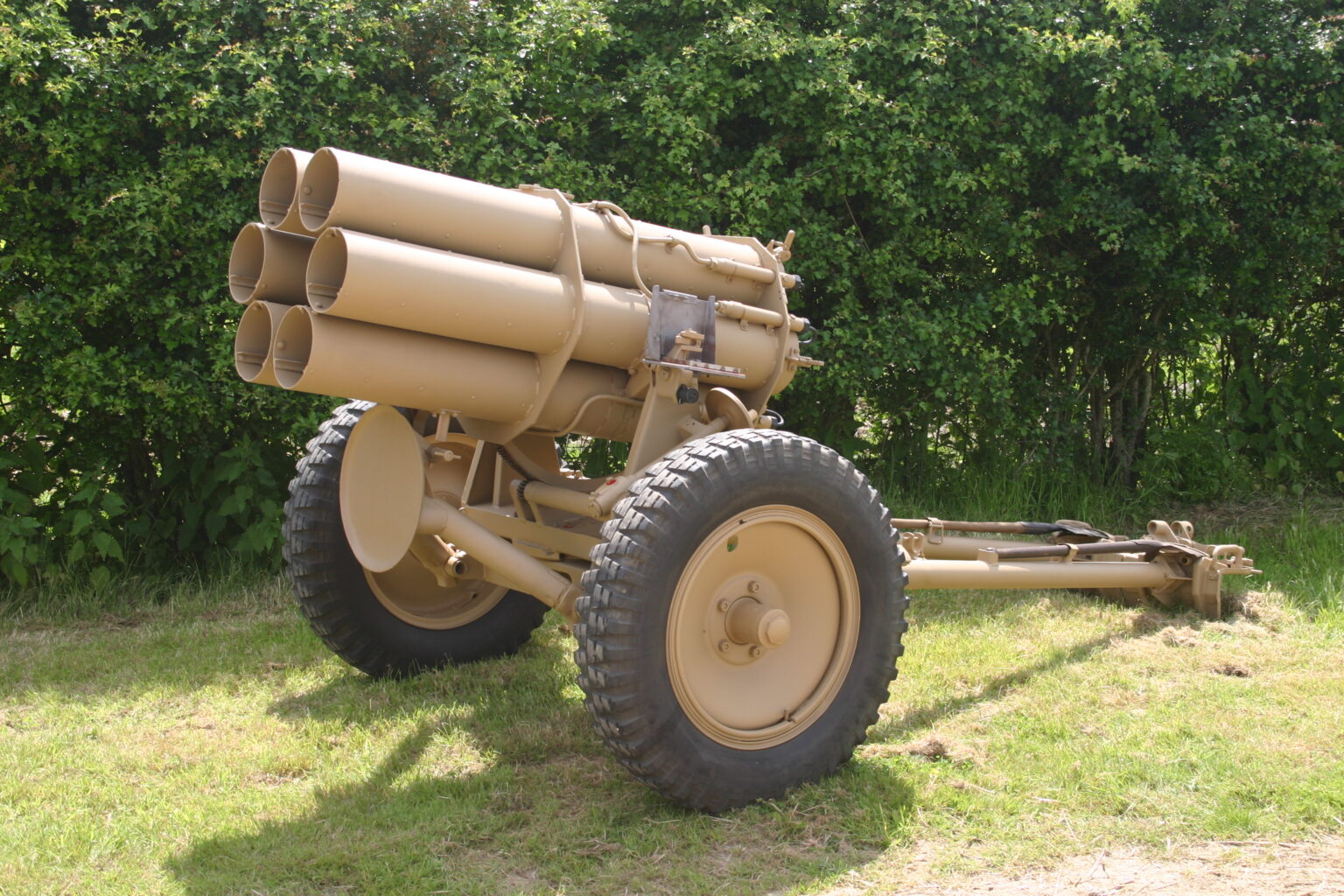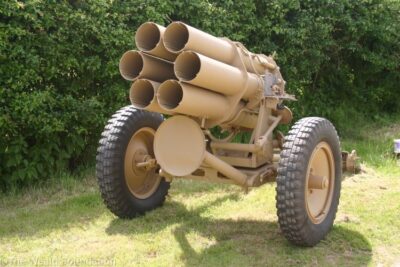Many visits over the years to a well-known collector in Normandy involved numerous glances at one of his prized possessions the Nebelwerfer. This Nebelwerfer 41 was a rocket-firing artillery piece which had six barrels or launch tubes. It fired the rocket propelled Wurfgranate 41 round (German for rocket grenade) weighing some 34 kg out to a range of up to 6800 metres (about four miles). The launcher was designed as a towed piece mounted on the modified carriage of a light, pre-war Pak 36 anti-tank gun. It was deployed in batteries and used extensively on both the Eastern and Western fronts.
This rocket launcher is rare and highly desired by the collector community. This example was special not only because of its rarity but also due to its provenance in the Battle of Normandy. It appeared to be in good structural condition and largely complete save for the various detachable components such as the optics, the bin between the trailing arms, the cleaning rods, the ranging poles etc. These would have to be collected over time.
The small size and light impact of its Wurfgranate 41 rocket meant the Nebelwerfer was ineffective against armoured targets, such as tanks and personnel carriers. Concentrated battery fire was, however, lethal when used against massed enemy infantry and soft skin vehicles.
After loading and aiming the launcher the crew would take cover a few metres away to avoid the dangerous back blast. The Nebelwerfer was fired by an electrically operated firing system. The Wurfgranate 41 left a tell-tale streak of exhaust smoke as it sped to its target. This left the firing position exposed to counter battery fire and it was necessary to quickly relocate the Nebelwerfer after firing.
In order to increase the mobility of the launcher the decision was taken to mount the launcher on semi-tracked chassis, known as the Maultier 42 Panzerwerfer . This was a lightly armoured half-track based on the Opel Maultier chassis, itself based upon a three ton truck chassis.
The Foundation’s Nebelwerfer
Following first inspection of this rare piece, we hoped for a straightforward restoration. Sadly this proved not to be the case. It became apparent that this weapon had spent a great deal of time outside in all weathers over the last 60 years. Everything was seized solid. Most of the nuts and bolts had corroded so badly it was almost impossible to fit a spanner to any of them. Our engineers had to painstakingly cut off many of the bolts in order to release parts needing restoration.
In addition a small calibre round had penetrated the torsion bar tube, allowing water to get in and corrode all the swing arm bushes, leaving the suspension seized up. Almost all the parts removed were in a similar condition. Once in pieces everything was sand blasted and re-assembled with a fresh coat of red oxide undercoat and Dunkelgelb paint.
With new wheel bearings and swing arm bushes working perfectly the Nebelwerfer rode the bumps surprisingly well rather than just hitting them as before.
We had planned to use the Nebelwerfer to take a part in spectacular displays assisted by selected living history groups. Sadly, following a disastrous misfire, when a dummy rocket ended up landing in a nearby field next to a startled cow, we took the decision to ‘retire’ it. The project remains very much on the back burner.
- This article has 588 words
- Reading time: 2 minutes
- There are no photos
Become a Member - Access the Full Article
Members gain access to the full content of our articles, including photo galleries.


